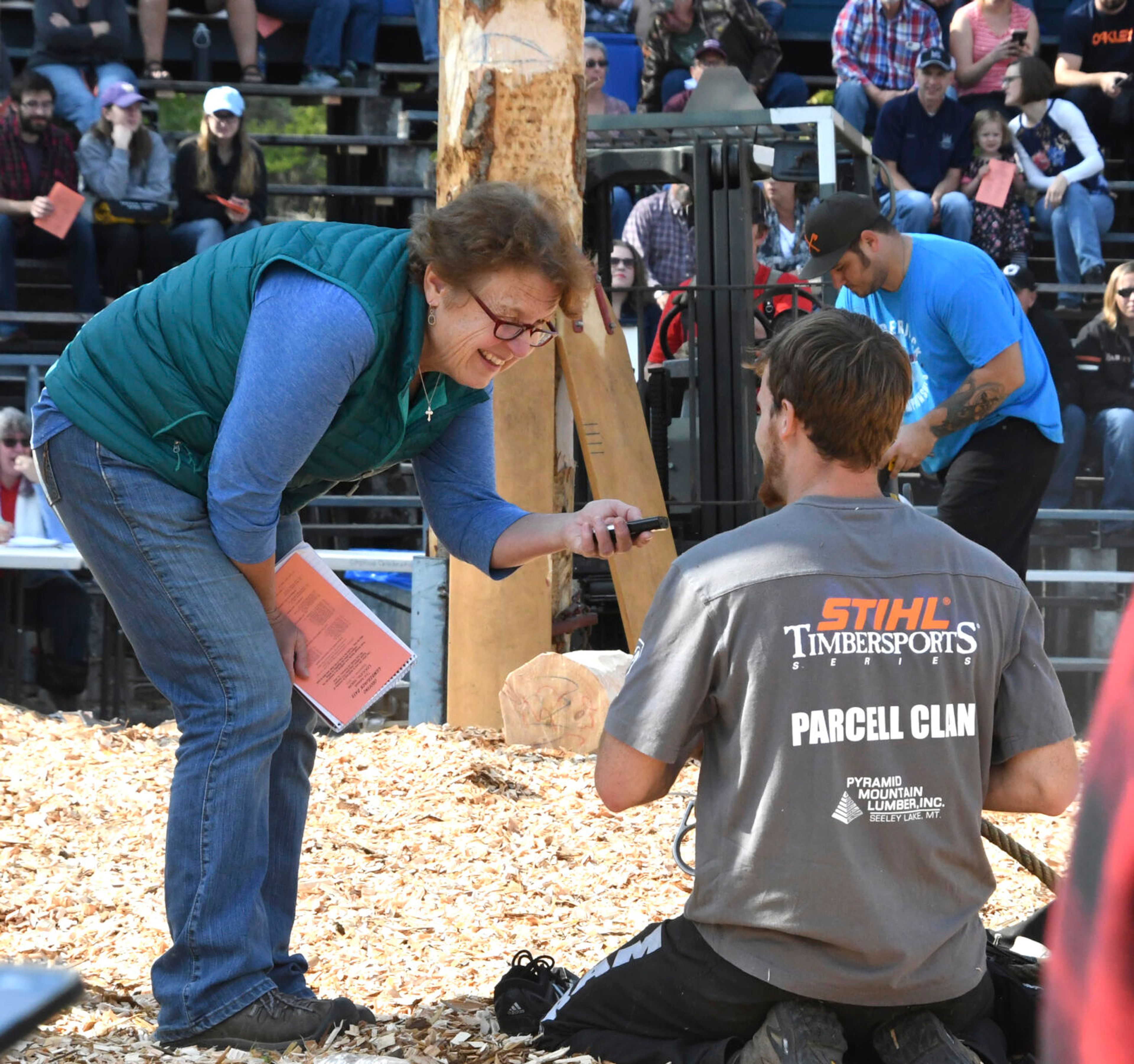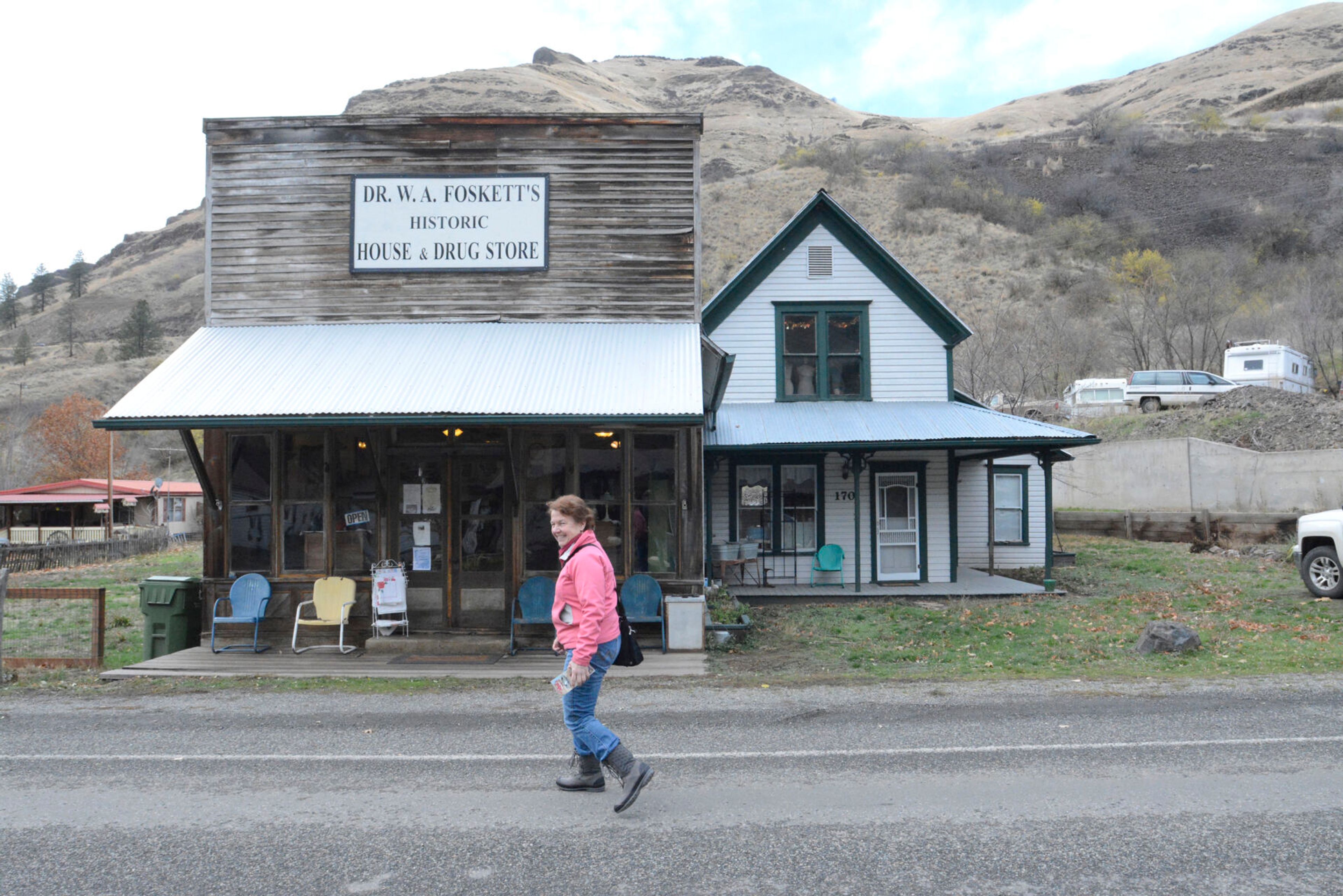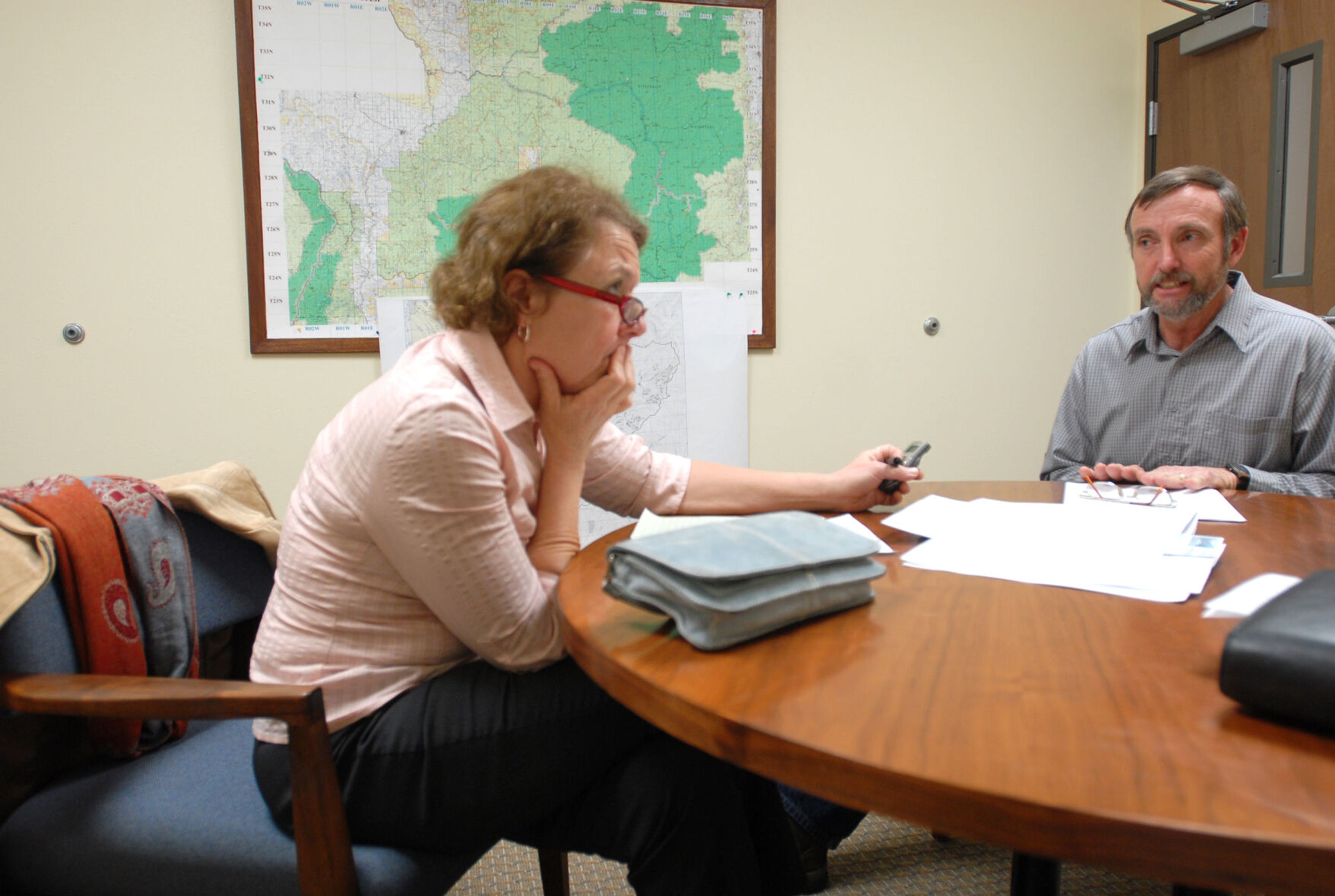The reporter tells her story
After more than 40 years on the job, Kathy Hedberg reflects on the big stories and colorful characters she covered during her career at the Lewiston Tribune
When I first started covering Idaho County for the Lewiston Tribune in August 1982, two of the veteran reporters, Johnny Johnson and George Shreve, offered me some shrewd insight.
Idaho County, Johnny said, was “the last Wild West county in the U.S.” And George, who’d seen it all, told me that the Tribune had always gotten stories out of Idaho County that it never would find any place else.
In that first year of reporting, 1982-83, I covered the mysterious disappearance of a 2-year-old boy, Ricky Barnett, from the chicken farm where he had been visiting his grandparents, Waldo and Martha McChoard. That mystery has never been solved — Ricky remains missing.
I also covered a mutiny at the Idaho County Sheriff’s Office when several deputies resigned en masse after accusing the sheriff, R.E. “Bud” Walkup, of covering up possible illegal drug dealing by one of his relatives. No charges were filed against Walkup and most of the deputies eventually returned to work.
In June 1983, U.S. Marine Capt. Robert Bravence and his wife, Cheryl, who were on a vacation in Idaho and had parked their camper along the South Fork of the Clearwater River for the night, were murdered in cold blood by two brothers from Texas, Mark and Bryan Lankford. The Lankfords were eventually captured in Texas and tried the following spring. Second District Judge George R. Reinhardt sentenced both brothers to death but, after many years, appeals and retrials for Mark, those sentences were reduced to life in prison where the Lankfords remain to this day.
Also in the fall of 1983 a pseudo-religious hippie group called the Love Israel Family inherited a building that had housed the U.S. Forest Service’s supervisor’s office. The Seattle-based Family announced plans to set up a satellite community in Grangeville, which ignited a fury among the locals who feared our town would become another Antelope, Ore., that had been commandeered by the Rajneeshees in the 1980s.
Tribune photographer Patrick Sullivan and I took a quick trip to Seattle to interview the Love Israel Family and talk to them about their plans to relocate to Grangeville. My primary contact with the group was named “Serious Israel” (all Family members took virtue-type names like that) and when we arrived in Seattle and I first met him, I offered my handshake and said, “Are you Serious?” (no pun intended).
In the end, for whatever reason, the Love Israel Family decided against moving to Idaho County, which was probably wise. Doesn’t seem like a group of hippies would be very comfortable in the last Wild West county in the U.S.
So that was the end of 1983. At a holiday party at the home of reporter Sandi Lee just before Christmas, another of my co-workers, Jim Fisher, told me that I had covered stories in my first year that most journalists wait their whole careers for.
Forty-one years later the excitement hasn’t stopped. My coverage area has expanded to include Lewis and Clearwater counties, as well as agriculture and religion for the entire readership area. In 1998 to 2007, I covered public education, which was a fascinating time for that beat. Marilyn Howard was the state public school superintendent overseeing a major transition in standardized testing for school children. President George W. Bush ushered in the No Child Left Behind Act that shook up some of the local school districts that weren’t meeting some of the proficiency goals for reading and math and risked losing federal funding.
One of the most triumphant stories I remember from that era happened in the Lapwai School District, which was among the lowest-ranking districts in the state. Parents and teachers got together to figure out how to turn things around and as a result the district initiated an improvement plan that included 90 minutes of reading every morning in the lower grades. Students sprawled on the floors, in the halls, in their classrooms reading, reading, reading, and by the next testing cycle, the district had brought up its scores significantly. It was a marvelous example of what can be accomplished when stakeholders put their minds together to solve a problem.
Perhaps because so much of this area is forested and remote, some people think this would be a great place to get away with murder. The volume of law-breaking may be on a much smaller scale than in New York or California. But cops here deal with many of the very same crimes and despite small forces, they have managed to make some notable busts.
In 1985 the Lewis County Sheriff’s office received word that a drug dealer who was wanted on federal charges had taken up residence at the Nezperce Hotel.
After watching the building for a few days and with help from surrounding agencies, state police and federal agents, Lewis County deputies raided the building and arrested the dealer and four others. The group had been smuggling heroin, cocaine and other drugs from South America and figured Lewis County, Idaho, would be a cozy place to lie low.
For a time, dead bodies were showing up everywhere and with what seemed scant evidence, officers in most cases tracked down the perpetrators and put them behind bars. Besides the Lankford case, Gerald R. Pizzuto, who is now on death row, walked into a camp where Berta Herdon and her nephew, Del, had been gold mining, forced them to lie on the ground and then smashed their skulls in with a ball-peen hammer.
Covering murder trials was fascinating for me at first. It was a great way to learn about the criminal justice system and the stories provided a lot of drama for readers’ interest.
But after awhile, those stories began to wear on me. There is so much suffering and tragedy involved in these crimes and I often wonder how court officials can maintain their equanimity dealing with them day after day. I eventually began to hope I could end my career without having to cover another murder trial, but there have been a few even since then.
Deadly fires have also been a hard topic to write about. There have been whole families destroyed by house fires and I will never forget two house fires in which young children were killed. A Tribune photographer took a photo of a child’s tricycle lying in the yard in front of a burned out house. Some 40 years later I still feel heartsick about that.
Mostly, however, stories have been interesting, energizing and fun to report, even when they were controversial.
In the 1990s, the U.S. Forest Service was dealing with a group of Earth First! protestors who were camped in the Nez Perce National Forest and doing what they could to interfere with logging. It involved some vandalism but the Earth First!ers were well-financed by a man from New Jersey named Robert Amon (aka “Ramon”) who lived in a converted school bus and bought some property south of Dixie where the protesters camped out. I visited the camp with a photographer and one of the things I remember about that visit was the huge garbage bag full of condoms hanging on a post.
In a conversation with Ramon, he griped about the “f***ing hippies” he had to deal with, making me wonder how committed he really was to the campaign.
I also recall talking with one of the Earth First! spokespersons who wouldn’t admit his group had damaged some logging equipment nearby but insisted that violence toward machines was insignificant compared to violence against nature. Several years later, while attending a friend’s graduation from the University of Idaho College of Law, I saw that same fellow in my friend’s graduating class.
Another memorable set of stories took place after 9-11 in which some Muslim students at the UI talked to me about their religion and about the misperception so many Americans had at that time that all Muslims were terrorists. These fellows were devout — they informed me that they couldn’t shake my hand because of cultural restrictions. They allowed me, however, to observe them as they knelt in prayer toward Mecca one of several times during the day.
Later I visited with two Muslim instructors at the UI who admitted they had never felt such animus toward themselves and Muslim students as during that time.
“This is a post-9-11 environment and everybody is kind of hoodwinked,” said S.M. Ghazanfar, a retired University of Idaho economics professor. “These are historic antagonisms and these massive demonizations (of Muslims) have gotten these ordinary citizens quite hepped up.”
One of my favorite beats has been agriculture, and a photographer and I once spent a whole day hanging out with Doug and Karen Lustig, who farmed near Greencreek. It was during harvest season and at the end of the day, Doug allowed me to take a spin around his wheat field aboard his monstrous combine. It was better than a carnival ride.
Mostly I have been impressed by the cutting edge, often futuristic agriculture research that goes on at UI and Washington State University and the fact that most of the crops raised here are exported overseas. Farmers may be our country’s best peace ambassadors because food exports break down barriers that politics often cannot.
One of the Tribune’s former city editors, Diane Pettit, once described journalism as “the passport to everything.” As a reporter, I’ve interviewed people I’d probably never get the chance to talk to under ordinary circumstances. And even though that has included a few famous people, like Carole King and Cecil Andrus, I have mostly enjoyed talking to the local folks who color our region.
One of those colorful figures was Hootie McReynolds who operated her roadside cafe south of White Bird along U.S. Highway 95 for more than 50 years.
“Every morning of the year,” I wrote in 2012, “with 1,208 pairs of owl eyes looking on (Hootie’s owl collection) Hootie McReynolds starts the coffee, mixes the pancake batter, bakes the biscuits and stirs the gravy.”
She learned the restaurant craft at age 12 and 65 years later, she said she’d never taken a day off.
Her menu was straightforward – no fancy meals and coffee cost 25 cents a cup.
“People on the highway are not going to eat a big meal,” Hootie explained. “They’ll eat a hamburger, a bowl of soup or chili — something simple — and down the road they go.”
Another unforgettable character was Lewis Crea, a farmer from Cottonwood who was the first Republican county commissioner elected at a time when all the other county officers in Idaho County were Democrats.
Lewis seemed like kind of a cranky guy when I first met him. But over the years covering the commission meetings, I grew to respect his common sense, his dry humor and courage. He called environmentalists “wildernuts.” And it was his courage in voting against the wishes of some of his Republican constituents by insisting that Idaho needed to comply with state law and develop a comprehensive land-use plan that got him defeated at the next election.
During those commission meetings, Mike Cook from the Nez Perce National Forest supervisor’s office would often visit and bring the commissioners a big box of pastries.
I asked Lewis whether accepting Cook’s gift of goodies didn’t amount to bribery.
“It’s not graft if you can eat it in 24 hours,” he said.
A comment from one of the agriculture professors at WSU who I interviewed years ago has stayed with me and pretty much defined what I have loved most about this career.
“I envy you for your job,” he said. “You get paid to learn every day.”
There are so many people whom I’ve reported on, come to admire and felt privileged to be able to tell some of their stories. Many of the people I’ve admired most have been my own hard-working co-workers. We are the ones who cover daily events, stay up late, take the risks and do the dirty work to bring you the news every day.
And among those I admire most are the Alford family, Butch, Nancy, Brid, Nathan and Joanna, who are committed to keeping this newspaper locally owned. Trust me, you don’t want to see the day when there is no Lewiston Tribune in Idaho.
Hedberg is now retired from her full-time reporting position with the Tribune. She will continue to contribute to the Tribune's agriculture coverage. She may be contacted at khedberg@lmtribune.com.










